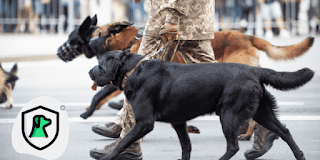Protection Dogs
In an increasingly uncertain world, personal safety and security have become paramount concerns for individuals and families alike. While security systems and alarms can provide a certain level of protection, nothing compares to the loyalty, intelligence, and instinctive nature of a well-trained protection dog.In this article, we will delve into the world of protection dogs, exploring their unique characteristics, training process, and the invaluable role they play in safeguarding their owners.
What are Protection Dogs?
Protection dogs, also known as guard dogs, are specially trained canines that possess the skills and temperament to protect their owners and property. These dogs are carefully selected for their natural protective instincts, intelligence, and physical capabilities. They undergo rigorous training to develop their skills in threat detection, apprehension, and deterrence, making them highly effective guardians.Characteristics of Protection Dogs
Protection dogs exhibit a range of characteristics that make them ideal for their role. These include:1. Loyalty:
Protection dogs form strong bonds with their owners and are fiercely loyal, always prioritizing their owner's safety and well-being.
2. Intelligence:
These dogs are highly intelligent and quick learners, making them adaptable to various situations and able to make split-second decisions when needed.
3. Courage:
Protection dogs possess a fearless nature and are not easily intimidated. They are willing to confront potential threats head-on, displaying unwavering bravery.
4. Alertness:
These dogs have heightened senses and are constantly aware of their surroundings. They can detect potential dangers and respond accordingly, providing an extra layer of security.
5. Discipline:
Protection dogs undergo extensive training to develop discipline and self-control. They are obedient and responsive to their handler's commands, ensuring effective communication and coordination.
Training Process
The training process for protection dogs is comprehensive and requires the expertise of professional trainers. It typically involves the following stages:1. Selection:
Dogs with the appropriate temperament, drives, and physical attributes are carefully selected for protection training. Breeds commonly used for protection work include German Shepherds, Belgian Malinois, Doberman Pinschers, and Rottweilers.
2. Socialization:
Dogs undergo socialization training to ensure they are comfortable and well-behaved in various environments and around different people and animals.
3. Obedience Training:
Basic obedience training lays the foundation for advanced protection training. Dogs learn commands such as sit, stay, heel, and recall, enabling them to respond promptly to their handler's instructions.
4. Protection Training:
This phase focuses on teaching dogs to identify potential threats, display controlled aggression when necessary, and apprehend intruders or attackers. Dogs are trained to respond to specific commands and to differentiate between friend and foe.
5. Scenario Training:
Dogs are exposed to various real-life scenarios, such as simulated home invasions or attacks, to ensure they can effectively apply their training in practical situations.
6. Continued Maintenance:
Training is an ongoing process, and protection dogs require regular reinforcement and maintenance training to keep their skills sharp and up-to-date.
Benefits of Protection Dogs
Owning a well-trained protection dog offers numerous benefits:1. Deterrence:
The mere presence of a protection dog acts as a powerful deterrent to potential intruders or attackers. Most criminals will think twice before attempting to breach a property protected by a trained guard dog.
2. Personal Safety:
Protection dogs provide a sense of security and peace of mind, knowing that you have a loyal and capable companion who will protect you in times of danger.
3. Family Protection:
Protection dogs are not only trained to protect their owners but also their families. They become an integral part of the household, ensuring the safety of everyone within.
4. 24/7 Security:
Unlike security systems that can be disabled or bypassed, protection dogs are always on duty, providing round-the-clock security and surveillance.
5. Companionship:
In addition to their protective abilities, protection dogs offer companionship and become beloved members of the family. They provide emotional support and can help alleviate stress and anxiety.
Conclusion:
In conclusion, protection dogs are the ultimate guardians for your security. With their unique characteristics, rigorous training, and unwavering loyalty, these canines provide a level of protection that surpasses traditional security systems. Their intelligence, courage, and alertness make them highly effective in detecting and deterring potential threats. The training process for protection dogs is comprehensive and ensures that they are well-prepared to handle various situations. Owning a well-trained protection dog offers numerous benefits, including deterrence, personal safety, family protection, and 24/7 security. Additionally, these dogs provide companionship and emotional support, making them beloved members of the family. If you prioritize your safety and seek peace of mind, a protection dog is an invaluable investment. Choose a reputable trainer and embark on a journey with a loyal and capable companion who will always have your back.
Tags :
Dogs
Share the article with your friends

